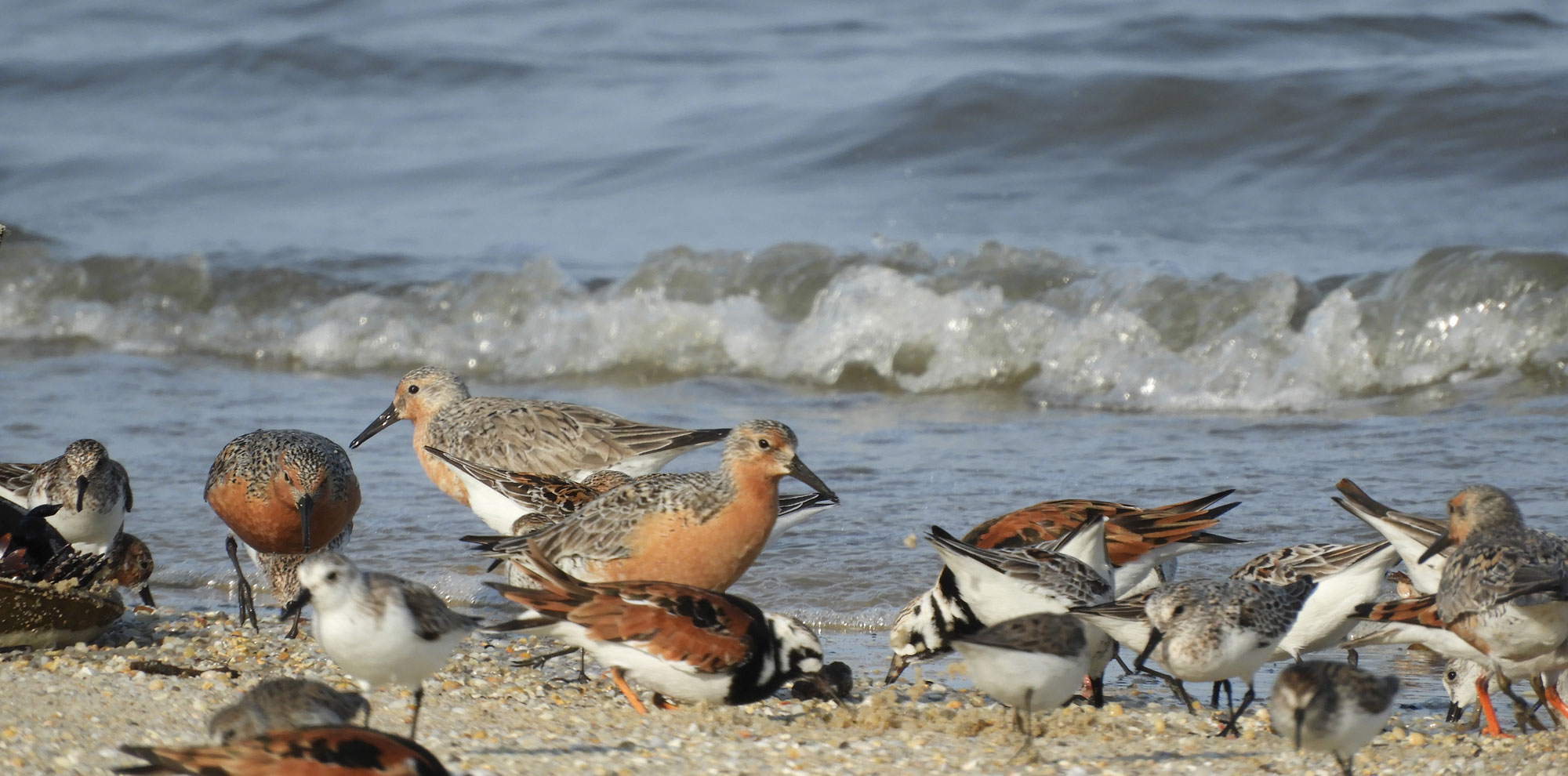
Lisa Schibley and Chistian Friis
Manomet North American Coordinator for the International Shorebird Survey (ISS), Wildlife Biologist, Canadian Wildlife Service, Environment and Climate Change Canada
In the Beginning: American Birds

It all started with a small announcement in American Birds, a journal devoted to bird records in North America calling for “any observer who may be able to participate in regular survey counts of shorebirds during spring and autumn migrations.” Interested candidates in Canada were to contact Guy Morrison of the Canadian Wildlife Service. Those elsewhere could reach out to Brian Harrington at Manomet Bird Observatory.
In 1974, Brian and Guy received data from 67 important shorebird sites across the hemisphere. By 1980, that had grown to 256, and in 2023, 750+ shorebird enthusiasts covered more than 1,300 sites, sending in over 11,000 checklists to the International Shorebird Survey through eBird to help shorebird scientists build their knowledge of population trends and migration paths.

Identifying Shorebird Migration Sites
Shorebirds are amongst the most spectacular migrants on the planet, and many species routinely travel between breeding grounds in Arctic North America and non-breeding grounds as far away as the southern tip of South America – a round trip over 32,000 km! During these annual migrations, shorebirds stop at a network of sites to rest and refuel, and the International Shorebird Survey began with the intention of identifying areas important to shorebirds during their northbound and southbound migrations.
The data gathered by these volunteer survey networks have contributed directly to helping establish the Western Hemisphere Shorebird Reserve Network (WHSRN), a critical network of 123 sites representing 20 countries, for which Manomet hosts and staffs the executive office.
WHSRN aims to protect key areas used by shorebirds throughout their range. Over the decades, ISS data have increasingly been used to assess and monitor shorebird populations. This is important because the dependence of shorebirds on coastal and wetland habitats makes them an excellent indicator of the health of our shared environment.

Monitoring Need Continues
The need to continue monitoring migrant shorebirds is still strong. Recent analyses show shorebird populations are among the fastest declining bird groups in North America, and data collected by volunteers across the Western Hemisphere contribute to our understanding of the effects of recovery efforts implemented by partners throughout the Western Hemisphere. If you’re already a volunteer and you’re reading this: thank you! And if you’re not, we’d love to have you – find out more about volunteering for Manomet here.
BONUS: Enjoy an exhibit celebrating the vision and volunteers of 50 years here!





 Back to all
Back to all


